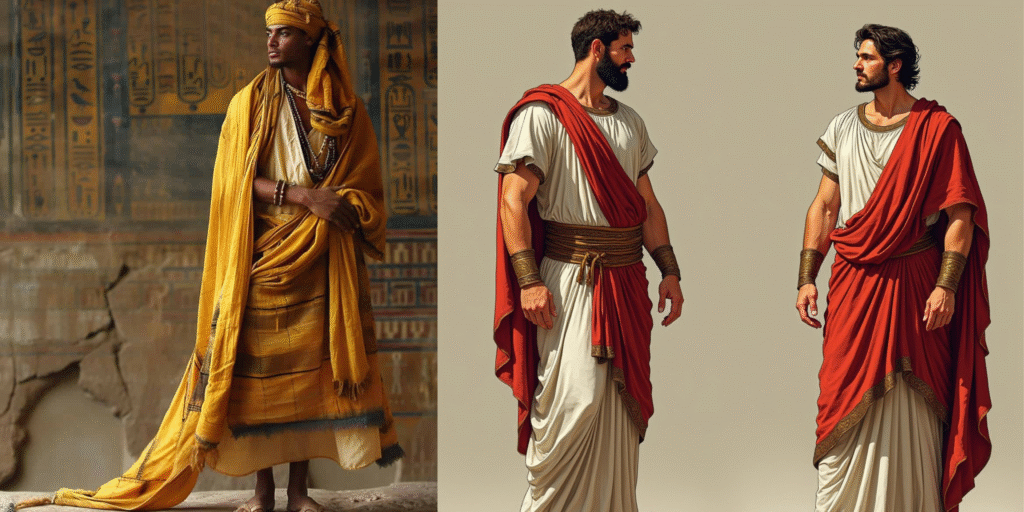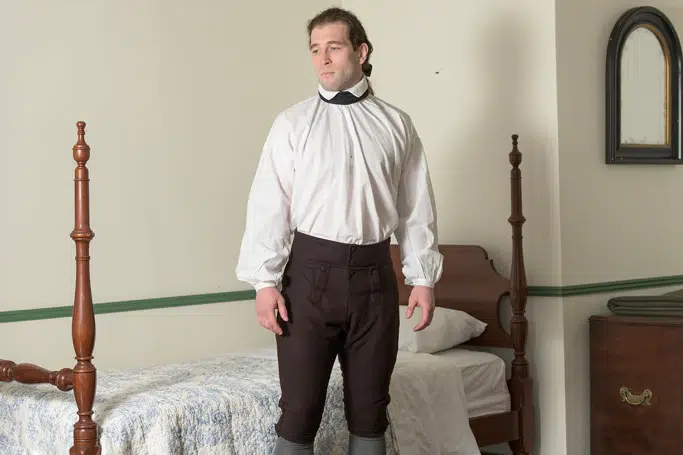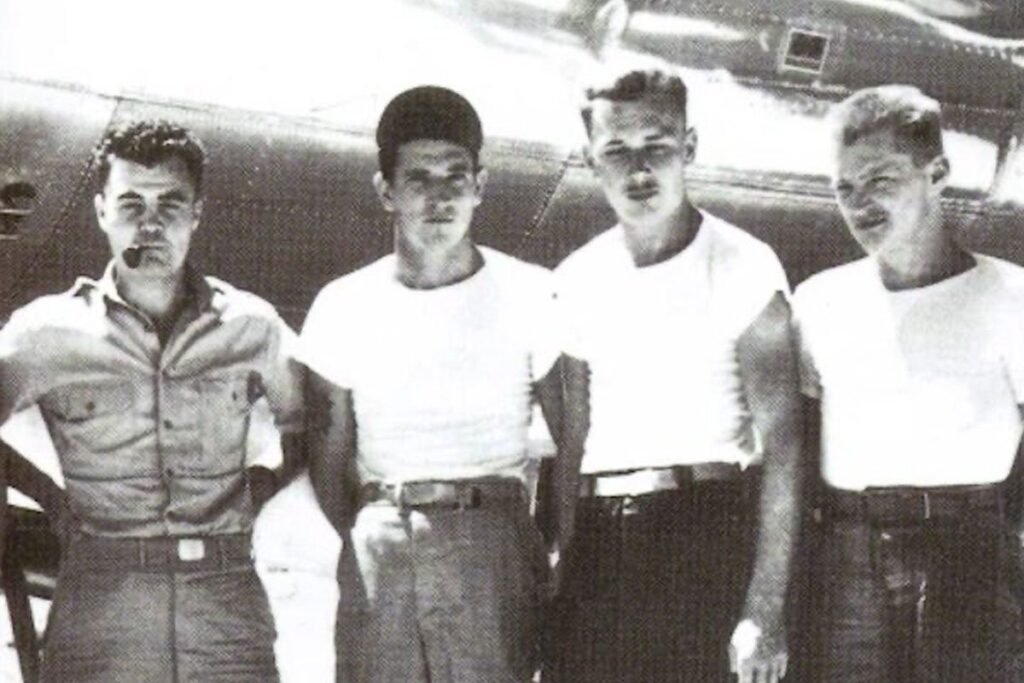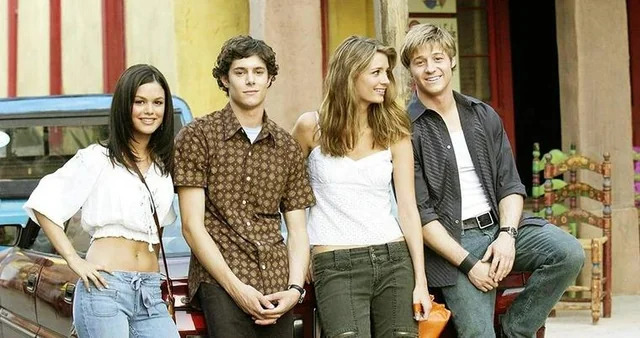From hand-stitched tunics to mass-produced hoodies, the evolution of upper wear is a wild ride through human creativity, culture, and necessity. Tops have always served dual purposes—shielding us from the elements and expressing who we are. Think of them as the first thing people notice, kind of like a visual handshake. As history marched forward, our choices in shirts, jackets, and everything in between began telling more complex stories—ones about identity, rebellion, innovation, and influence. Let’s peel back the layers and see how these wardrobe staples became what they are today.
The Origins of Tops – Ancient Times to the Middle Ages

Before fashion runways, there were Roman forums and Egyptian courts. The first “tops” were tunics—simple, functional garments worn by both men and women.
- Egyptians wore linen tunics and kilts, often adorned for status.
- Romans rocked tunica and stola, tailored by wealth and social class.
- By the Middle Ages, tops began to reflect religious and feudal structures, with noblemen donning embroidered blouses and peasants sticking to rough-spun shirts.
Tops weren’t just clothes; they were loud symbols of who you were in a society where clothing laws (sumptuary laws) literally dictated what you could wear.
The Birth of the Shirt – From Undergarment to Fashion Staple

Originally seen as undergarments in the Renaissance, shirts weren’t meant to be seen. But by the 18th century, shirts got stylish. Frilly cuffs, high collars, and intricate pleats were a thing of elegance. By the Victorian era, they had evolved into public outerwear—pristine and structured.
- The white shirt was a mark of a “gentleman.”
- The detachable collar allowed men to wear one shirt with multiple collars.
This evolution marked the transformation of the shirt into a defining symbol of cleanliness, class, and conformity.
The Victorian Era – Shirts as Status Symbols
In the 19th century, if your shirt was white and crisp, you likely weren’t working with your hands. Upper-class men flaunted this through complex shirt constructions—starched collars, puffed sleeves, and gold cufflinks. For women, blouses became increasingly structured too, signifying femininity and propriety.
- Office clerks wore bowties and thin-striped shirts.
- The working class stuck with cotton, often gray or checkered for durability.
Shirts were no longer just garments—they were statements of power, purpose, and presentation.
The Rise of the T-Shirt – From Military to Mainstream

The humble T-shirt has surprising roots. During WWI, American soldiers saw European troops wearing lightweight cotton undershirts and brought the idea home.
By the 1940s, the U.S. Navy had made it standard-issue, but it was Marlon Brando in “A Streetcar Named Desire” (1951) who turned the T-shirt into a rugged, rebellious icon.
- Simple, comfortable, and cheap, T-shirts quickly became everyday essentials.
- Printing slogans, band names, and logos added individuality.
T-shirts were democratizing. Anyone, anywhere, could use them to say something—literally.
T-Shirts in the Pop Culture Boom

T-shirts exploded as cultural billboards during the 1960s and ’70s, bearing bold political slogans, peace symbols, and iconic band logos. Artists like The Beatles, The Ramones, and Pink Floyd cemented the graphic tee’s place in the music scene, turning simple cotton into a canvas for rebellion and identity. By the 1980s, thanks to MTV’s influence on youth culture, graphic T-shirts became a staple of teen expression.
The 1990s ushered in the oversized T-shirt trend, driven by skaters, grunge subcultures, and hip-hop icons. These loose-fitting tees became a symbol of rebellion and authenticity.
Fast forward to today, and T-shirts are more than casual wear—they’re powerful tools for personal branding and corporate marketing. Whether it’s Obama’s campaign shirt, a viral Supreme drop, or a limited-run streetwear collab, the modern tee is both statement and status symbol.
Explore bold designs and quality basics in this growing trend by checking out our collection of wholesale graphic tees and stylish tops that make self-expression both accessible and iconic.
Hoodies – From Utility to Urban Culture Icon

Born in the 1930s by Champion for warehouse workers, the hoodie was all about warmth and practicality. It quietly entered colleges and sportswear, but didn’t stay quiet for long.
- The 70s Bronx hip-hop scene embraced hoodies for anonymity and identity.
- By the 90s, skaters and rappers made hoodies synonymous with street culture.
Its casual nature mixed with mystery made it edgy—and sometimes controversial.
The Hoodie Controversy and Resurgence
Hoodies became associated with suspicion in the 2000s—banned in malls, stereotyped in media. But like a phoenix in cotton, it came back strong.
- Trayvon Martin’s 2012 tragedy turned the hoodie into a symbol of protest.
- Brands like Yeezy and Off-White rebranded it as high fashion.
The hoodie now lives in boardrooms, classrooms, and catwalks—powerful, political, and personal.
Jackets Through the Ages – Style Meets Protection
Jackets began as essential outerwear for military and travelers. The earliest forms were made of wool and leather, crafted to endure the elements.
- In the 1800s, structured coats defined masculinity.
- The 1900s saw the birth of leisure jackets, often modeled after hunting or military garb.
As new materials like nylon and denim emerged, jackets turned from shields to statements.
The Bomber Jacket, Denim Jacket & Leather Jacket Origins
- Bomber jackets were created for WWI pilots; today they’re varsity and fashion staples.
- Denim jackets, born from Levi’s workwear, symbolize rugged Americana.
- Leather jackets, made famous by James Dean and biker gangs, became the uniform of rebellion.
Each jacket tells a different story but shares a common thread—attitude.
Gender and Fashion: Shifting Norms in Tops and Outerwear
Once sharply divided by gender norms, clothing lines are now increasingly fluid. Women in suits. Men in pink hoodies. Androgynous styles are booming.
- The unisex tee made everyone feel included.
- Hoodies and jackets have become genderless silhouettes.
Fashion is less about “his” and “hers” and more about self-expression.
Iconic Moments in Upper Wear History
Think of James Dean’s white T-shirt, Kurt Cobain’s flannel, or Mark Zuckerberg’s hoodie. Upper wear has created legendary pop culture moments.
- Princess Diana in biker shorts and a college sweatshirt—forever cool.
- Run-D.M.C. in Adidas tracksuits and gold chains—instant street cred.
Sometimes, a single outfit can define an era.
Influence of Celebrities on Shirt and Hoodie Trends
From Justin Bieber’s oversized hoodies to Rihanna’s shirt-dresses, celebrities set the stage for what’s cool.
- Rap icons turned hoodies into luxury items.
- Influencers now collaborate with brands, dropping limited-edition jackets and tees.
What they wear becomes what we buy.
Sustainability and the Future of Fashion Tops
Eco-fashion is no longer niche. Organic cotton, recycled polyester, and circular fashion models are reshaping how we design tops.
- Brands are using biodegradable dyes and plastic-free packaging.
- Upcycling old T-shirts and jackets is becoming mainstream.
The future of fashion is green—and still very stylish.
Global Variations – Tops and Jackets Around the World
From the kurta of India to the dashiki of West Africa, the concept of upper wear is global, diverse, and deeply cultural.
- Japan’s kimono jackets blend tradition with trend.
- South American ponchos offer warmth with flair.
Fashion isn’t just Western—it’s a world of expression.
Conclusion
Tops, T-shirts, shirts, hoodies, and jackets aren’t just fabric stitched together—they’re threads that weave our identity, history, and future. What started as protection evolved into expression. Each era left its signature on our sleeves, literally. Whether you’re pulling on a hoodie or buttoning a crisp shirt, you’re part of a legacy that spans continents and centuries. So next time you throw something on, remember—it’s not just fashion. It’s a story.
FAQs
Q1: When did T-shirts become popular everyday wear?
A: After WWII, T-shirts became common casual wear, especially post-1950s thanks to icons like Marlon Brando.
Q2: Why were hoodies considered controversial?
A: Hoodies were unfairly stereotyped as symbols of rebellion or criminality, especially in the 2000s, leading to bans in public spaces.
Q3: What is the origin of the leather jacket?
A: Leather jackets started as military flight gear and gained cultural fame through movies and biker culture.
Q4: How have gender norms changed in upper wear?
A: Modern fashion embraces fluidity, with many garments now considered unisex and focused on individual expression.
Q5: What makes a fashion top sustainable?
A: Sustainable tops are crafted from organic or recycled materials, manufactured using eco-friendly processes, and intentionally designed to minimize waste and environmental impact. To explore eco-conscious options, browse our wholesale sustainable fashion tops that combine style with responsibility.

